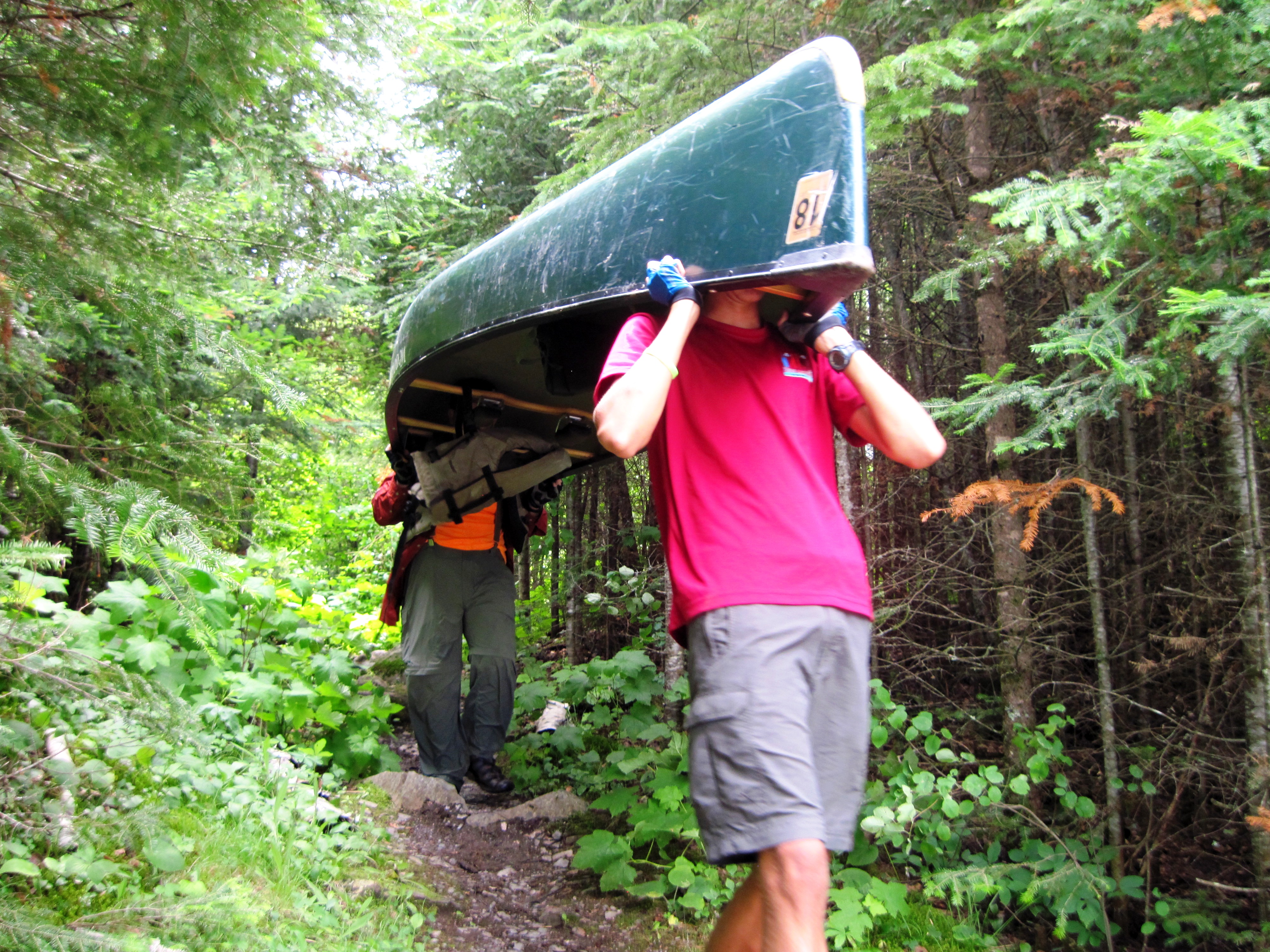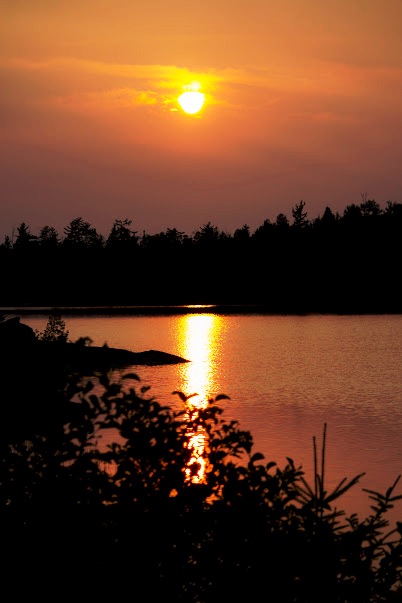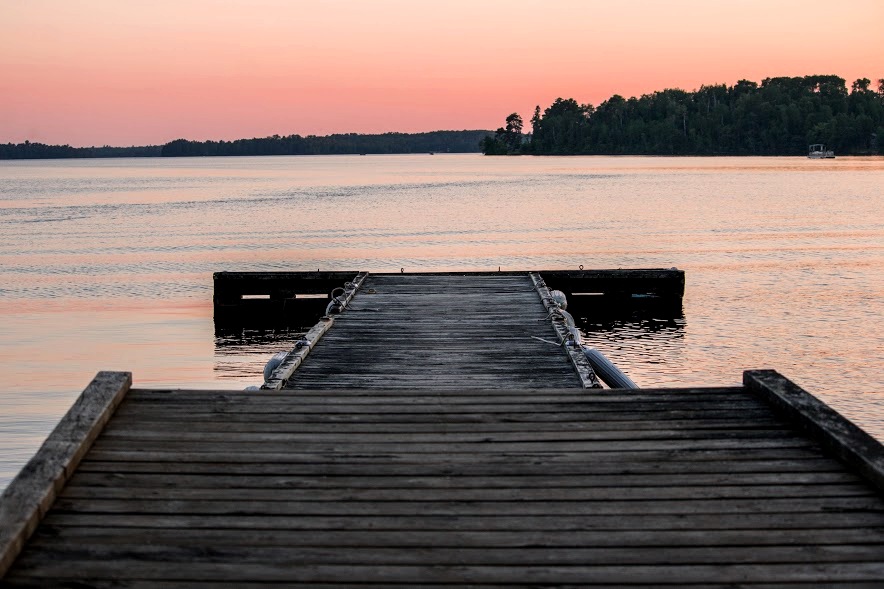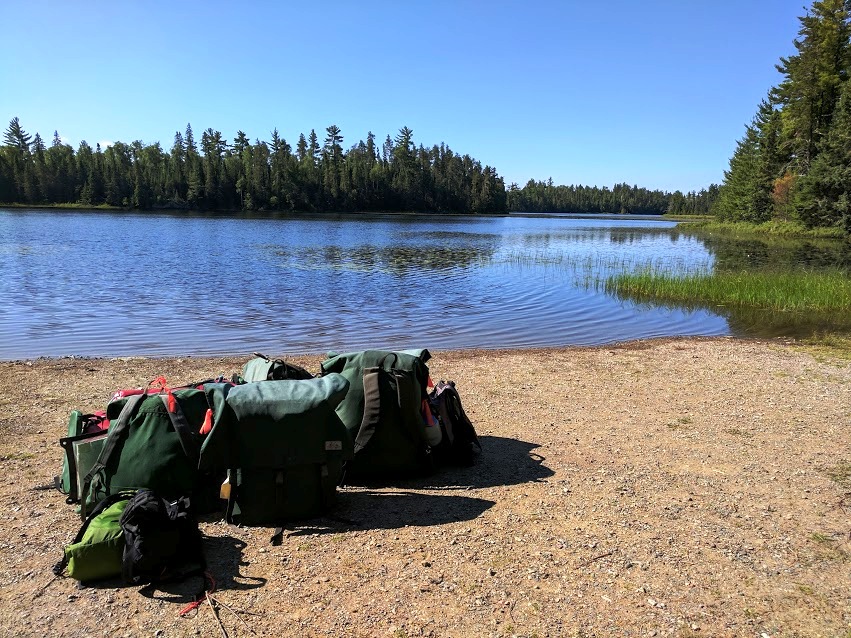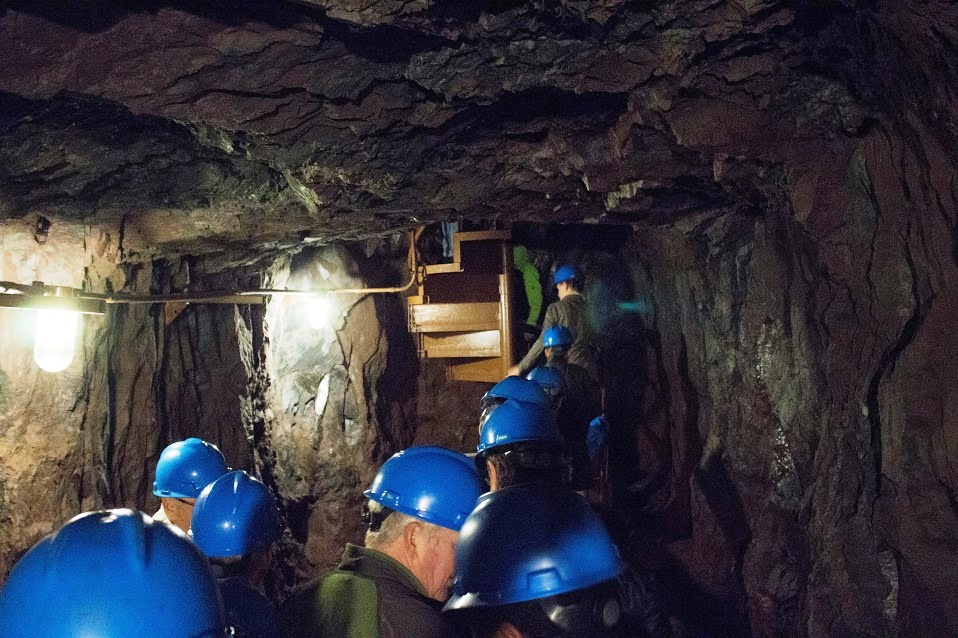I just returned from an invigorating and, at times strenuous, adventure at Boundary Waters Canoe Area Wilderness, a U.S. Wilderness Area in Minnesota’s North Woods, part of the boreal forest of North America. I was fortunate to be able to participate as part of my grandsons’ Boy Scout Troop’s 50 Miler Award exploit. To understate the experience, it was absolutely life affirming and unforgettable. The trip from origin to destination was eight days and seven nights with six days in canoe. No motors, no cell phones and no computers….and we survived!

Reflections on Independence Lake (J.Compisi)
Boundary Waters Canoe Area Wilderness (BWCAW), or BWCA as it is commonly known, is part of the Superior National Forest and Voyageurs National Park in Minnesota. The name “Boundary Waters” is often used in the U.S. to refer specifically to the U.S. Wilderness Area protecting its southern extent, while the Canadian side includes La Verendrye and Quetico Provincial Parks of Ontario. This 1,090,000-acre (4,400 km2) wilderness area, a blend of forests and glacial lakes and streams is under the administration of the U.S. Forest Service and is a popular destination for both canoeing, trekking and fishing. It is one of the most visited wildernesses in the United States hosting nearly a quarter million visitors each year. Its 1,200 miles of canoe routes and 2,000 campsites as well as hiking trails account for its popularity. BWCA was formally established in 1978 by the Boundary Waters Canoe Area Wilderness Act.
Canoe route planning was key as there are a limited number of designated campsites and, except in an emergency, you are required to overnight in these. They are first come first serve and are limited to nine campers at a time so if someone gets there before you…keep paddling. Also, you have portages between the various lakes that are unavoidable so planning your route includes which portages you will have to traverse with all of your gear and canoes. Portaging can be as simple as one trip but may also be 2-4 round trips if you bring to much gear. Some are short (20 rods which equals 100 meters) and some are longer (over 600 rods). A good outfitter like John, from North Country Canoe Outfitters, can help you pick a route that has good fishing, better camp sites and advise about the portages.
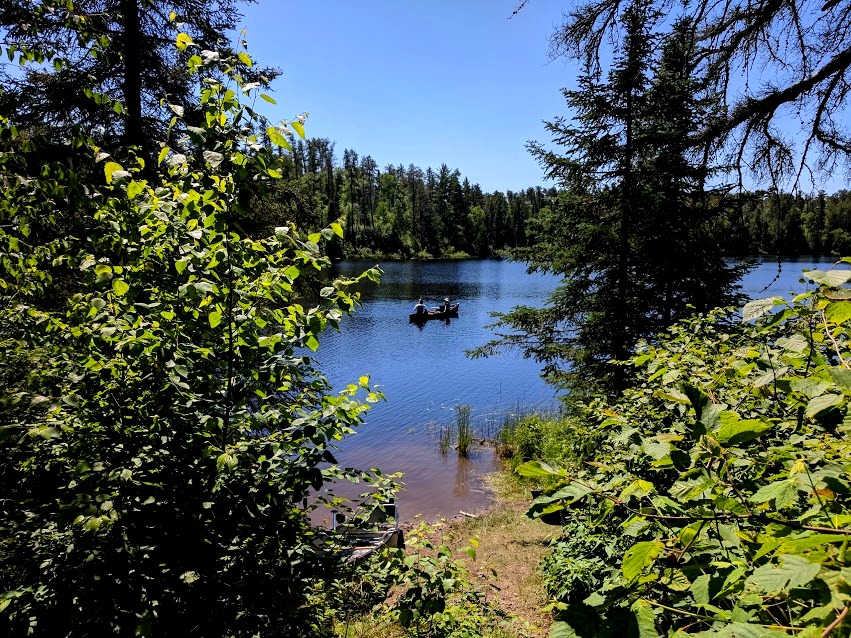

Disappointment Lake (J.Compisi)
Our group of 27 (adults, scouts and a couple non-scout siblings) arrived at the outfitters after along day of traveling (Think trains, planes, buses and automobiles). The outfitter team took us in hand an assigned us bunks in their various bunk houses dividing us by male-female and adults -adolescents/teens). After a nights rest we were up early for briefings and equipment issue. Well organized and efficient. We then broke into our 3 pre-determined groups of 9 to head to our put-in points with our gear and canoes.

The author and grandsons (K.Calzia)
Our group of nine was launched at Moose Lake, about 40 minutes from the Outfitters. We paddled for about 4 miles over 3 lakes (Moose, Newfound and Splash) and executed two minor portages in about 4 hours. It was fabulously serene and unspoiled. The only sound was the delighted chatter of our small group and the splash of our paddles hitting the water. We saw our first bald eagle on this very first day but saw several more over the next 5 days. The first afternoon of setting up camp was a bit rag-tag with tent set up, cooking dinner, dish washing and personal hygiene but we developed a comfortable rhythm over the next several days.
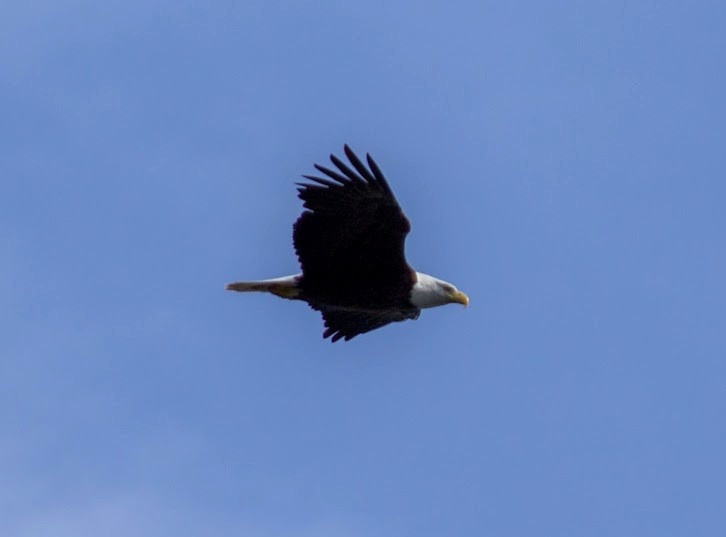
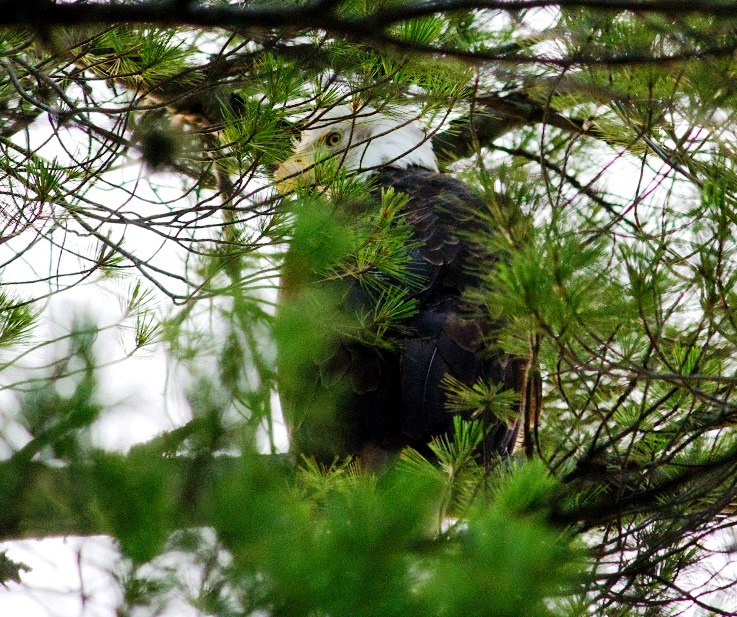
Bald Eagle over Disappointment Lake and in tree (K. Calzia)
The four person tents, air pads and sleeping bags were in excellent condition and offered a bit of welcome comfort in this true wilderness setting. We fished morning, noon and night, from our canoes and from the shore. The food provided was more then adequate and included fresh burgers, steaks, eggs and brats for the first couple of days. The remainder was dried pastas and other reconstituted camp favorites like Chicken a la King and Beef Stroganoff. Of course the salami, cheese and PBJs were nearly always available.
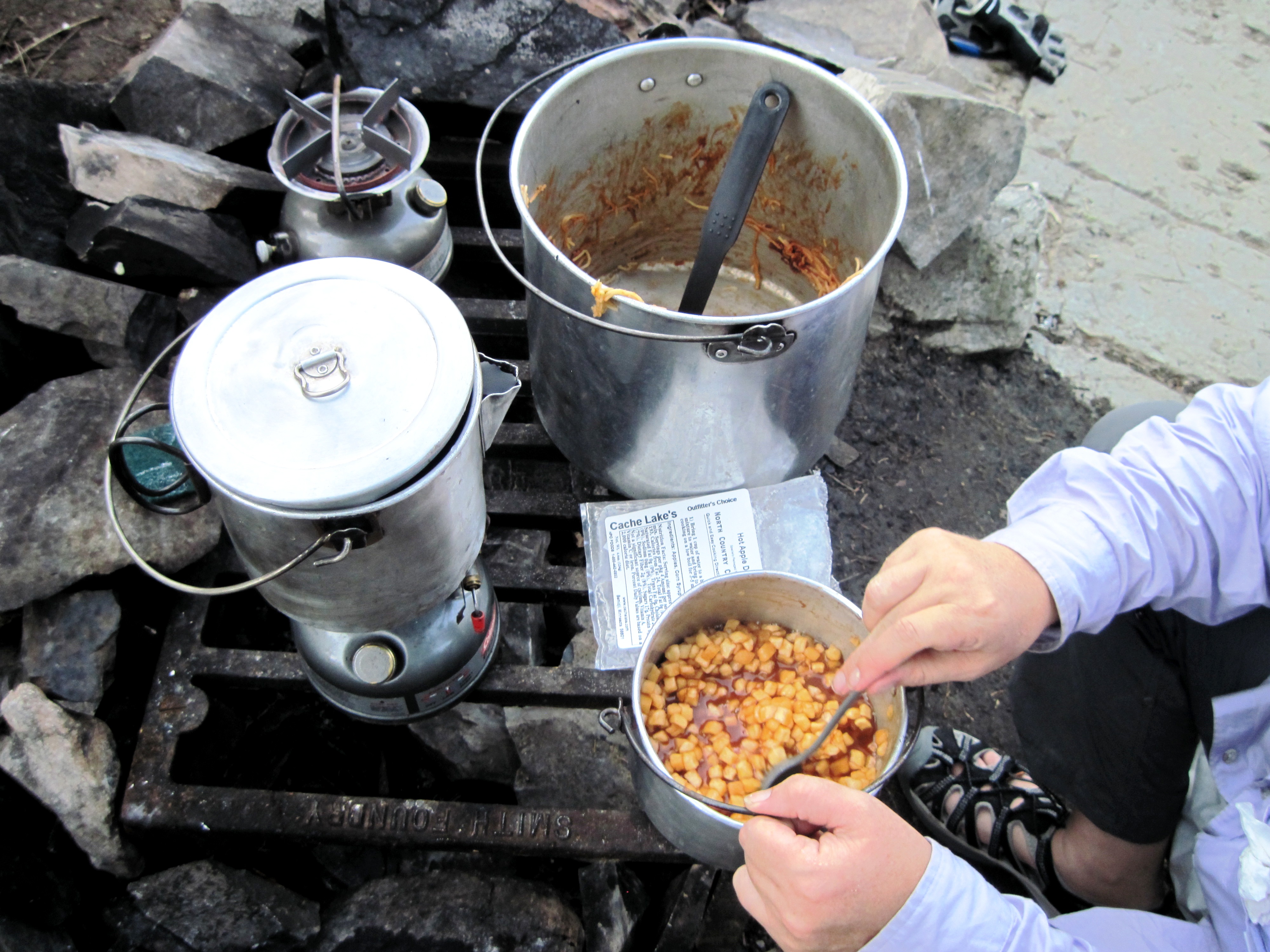
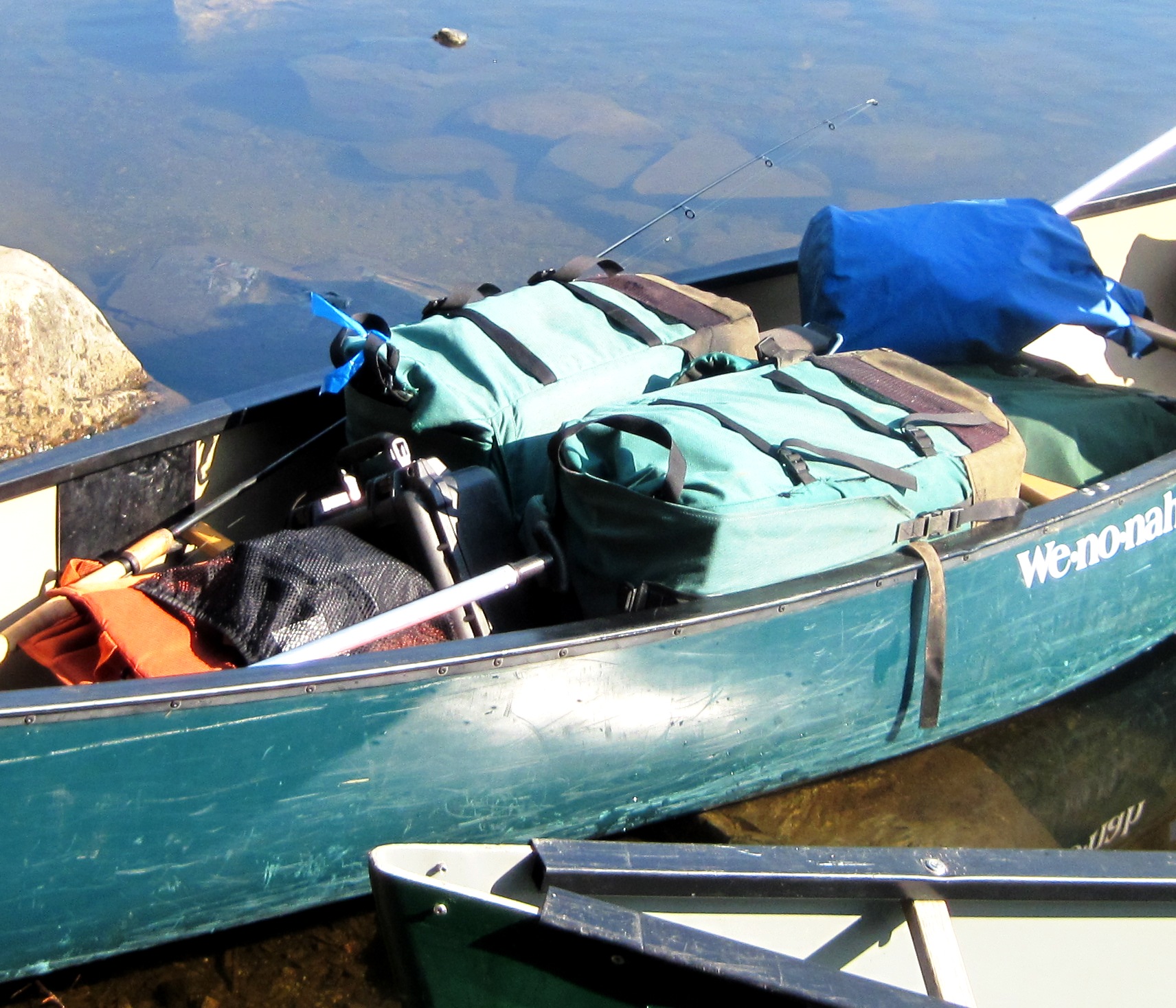
Dinner being reconstituted and Loaded Canoe (J.Compisi)
The next day saw more eagles and another 4+ miles of paddling with a couple of smaller portages as we made our way to Ensign Lake nearing the Canadian border. We found a good campsite and decided to spend two nights there. After our dinner of Brats with mustard, we planned our day trip for day 3. Our first inclement weather occurred with fairly severe thunder storms with lightening and torrential rain. Fortunately it passed rather quickly and only returned while we slept and by morning things were fairly dry as we left for Birch Lake and the Canadian Border. We were traveling light as we only took our food (didn’t want to hang it to keep it away from the bears) and our day packs.


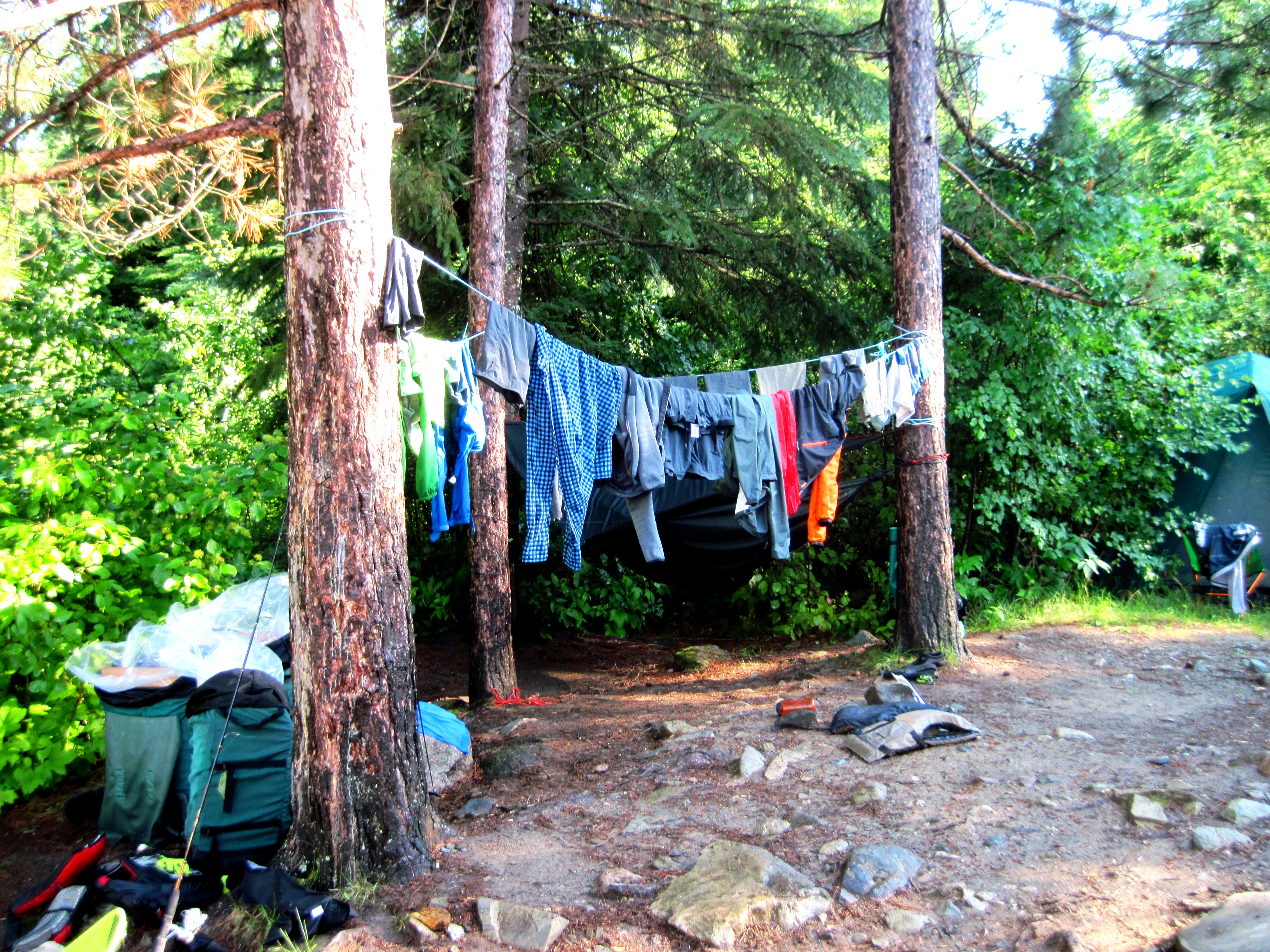

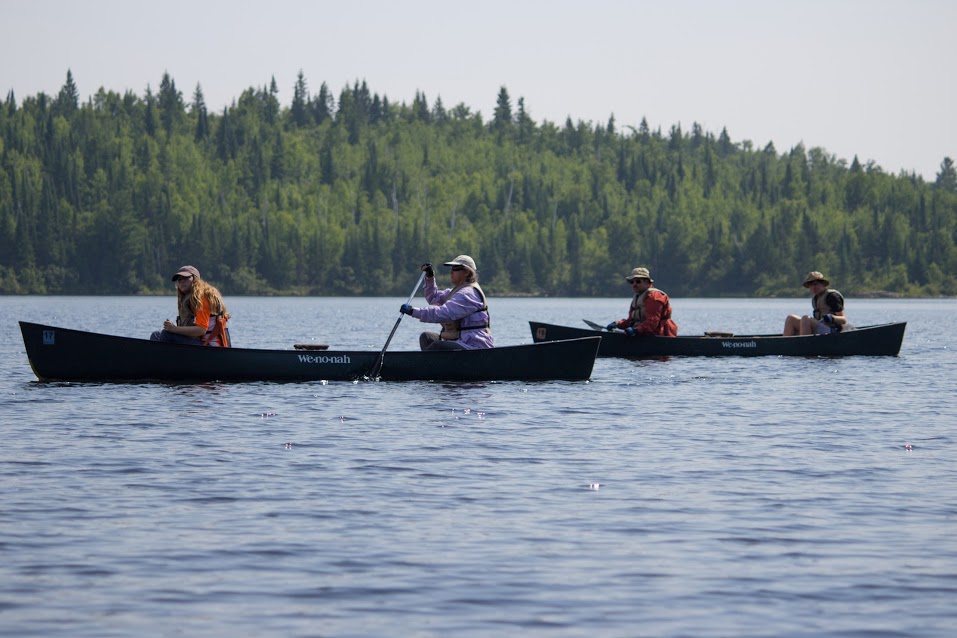
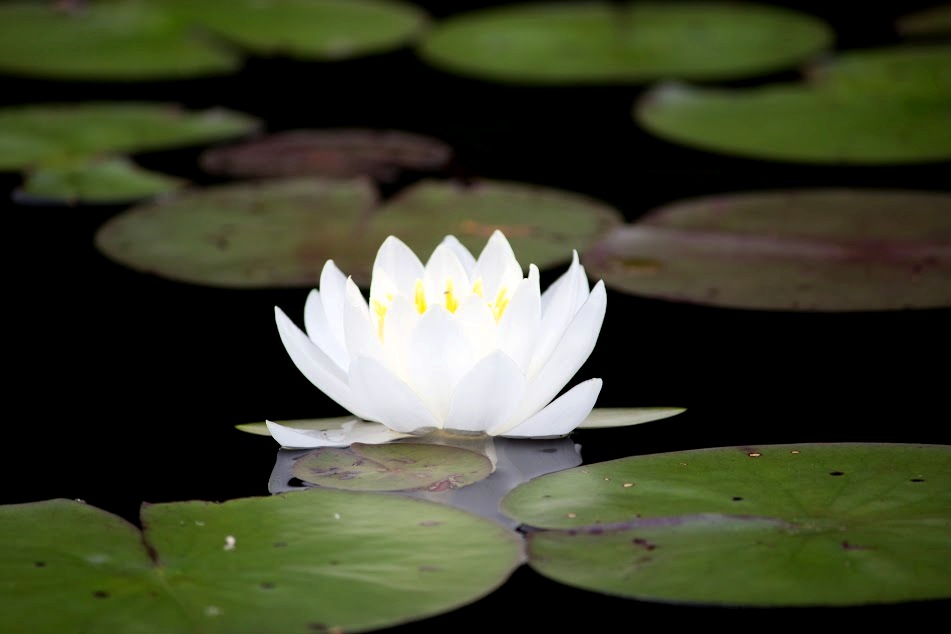 Lily from Jitterbug Lake (K.Calzia)
Lily from Jitterbug Lake (K.Calzia)